-
U.K. winter flooding to get more severe, frequent
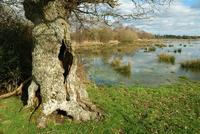
Winter flooding in the United Kingdom is set to get more severe and more frequent under the influence of climate change as a result of a change in the characteristics of atmospheric rivers (ARs). ARs are narrow regions of intense moisture flows in the lower troposphere of the atmosphere that deliver sustained and heavy rainfall to mid-latitude regions such as the United Kingdom.
-
-
Black Hat event highlights vulnerability of U.S. critical infrastructure
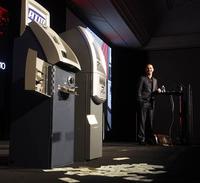
Cybersecurity researchers at the Black Hat conference now going on in Las Vegas, will demonstrate how hackers can gain access to U.S. critical infrastructure, and even cause explosions in oil and gas facilities, by altering the readings on wireless sensors used by the oil and gas industry. The faulty sensors typically cost between $1,000 and $2,000 each, and hundreds or even thousands of them are used at a single oil, gas, or water facility.
-
-
NIST seeking comments on energy industry security scenarios
The National Cybersecurity Center of Excellence (NCCoE) works with industry, academic, and government experts to create open, standards-based, modular, end-to-end solutions to cybersecurity challenges that are broadly applicable across a sector. The solutions are customizable to the needs of individual businesses, and help them more easily comply with relevant standards and regulations. The work is organized around use cases that describe sector-specific challenges.
-
-
Feds give upstate New York counties $5 million money to repair roads, bridges
The Federal Highway Administration (FHA) has approved $5 million in emergency funding to help fifteen upstate New York counties make repairs to their roads and bridges damaged in a flood late last month.
-
-
Warming to reduce snow water storage 56 percent in Oregon watershed

A new report projects that by the middle of this century there will be an average 56 percent drop in the amount of water stored in peak snowpack in the McKenzie River watershed of the Oregon Cascade Range — and that similar impacts may be found on low-elevation maritime snow packs around the world. The snowpack reduction may have significant impacts on ecosystems, agriculture, hydropower, industry, municipalities, and recreation, especially in summer when water demands peak.
-
-
Changes to levee system would reduce storm surge risks to New Orleans: study
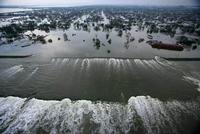
Historically, the design of Southeast Louisiana’s hurricane flood risk reduction system has hinged on raising and adding levees in response to river or hurricane events that impact the region. A new study shows that the lowering of man-made levees along 55-kilometer section of the west bank of the Lower Plaquemines river to their natural state, to allow storm surge to partially pass across the Mississippi River, will decrease storm surge upriver toward New Orleans.
-
-
Lawmakers, citing shortcomings, threaten funding for chemical plant safety program

Heads of three congressional panels urge DHS secretary Janet Napolitano to take to correct shortcomings in the Chemical Facilities Anti-Terrorism Standards (CFATS) program. “As the authorizers and appropriators of this program, we write to you to express serious reservations about continuing to extend CFATS funding without evidence of substantial programmatic improvement,” the three chairmen write in their letter to Napolitano. The lawmakers pointed to flaws in the program’s risk evaluation system, compliance hurdles, implementation delays, and the failure of the program to identify vulnerable facilities.
-
-
Motivating businesses to adopt building resiliency standards
Increased resilience for buildings in the face of hurricanes, earthquakes, terrorism, or cyberattacks has been a major national security focus over the past decade. Such resilient buildings not only would be less susceptible to damage and work interruption but could become community gathering places in a general crisis. It will not be easy, however, to secure voluntary adoption of resiliency standards by industry and builders without adequate justification.
-
-
Cost to U.S. of cybercrime lower than earlier estimates
The Center for Strategic and International Studies (CSIS) and security firm McAfee published a revision of McAfee’s previous estimate of the cost of cybercrime to the United States, reducing the amount from $1 trillion to $100 billion. Experts say this should not be a reason for complacency.
-
-
UMaine student develops affordable option for shoring up Maine’s aging bridges
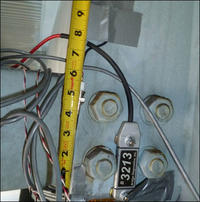
The State of Maine Department of Transportation is responsible for 2,772, or 70 percent, of the bridges in the state. A 2007 report found that of those bridges, 205 are more than 80 years old, 244 were considered in poor condition, and 213 were found to be structurally deficient. Additionally, 288 bridges were at risk of closure or weight restrictions between 2007 and 2017. Replacing all these bridges would be too costly. Researchers developed software designed specifically to assess the load rating of flat-slab bridges to determine which bridges can be repaired instead of replaced. For the bridges that can last a few more years with reinforcing instead of replacing, the researchers engineered a retrofitting system which could be applied to increase the bridge’s strength and weight limits.
-
-
White House considering incentives for cybersecurity compliance
The Obama administration is considering whether to back tax breaks, insurance perks, and other legal benefits for companies which bolster their digital defenses. The incentives, which include limited protections from legal liability and tax incentives, would be set up to persuade power plants, water systems, chemical plants, and other critical infrastructure companies to comply with the voluntary cybersecurity rules which are being drafted as part of President Obama’s cybersecurity executive order.
-
-
Making power lines safer
Last year, blackouts left 620 million people in India without power for a couple of days, and cost the U.S. economy more than $120 billion. Electric sparking has been blamed for major bushfires in Australia. Researchers have invented and patented a way of detecting and locating potential electrical faults along long stretches of power line before they occur.
-
-
New iceberg theory points to rapid disintegration, exacerbating sea level rise
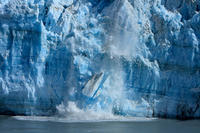
In events that could exacerbate sea level rise over the coming decades, stretches of ice on the coasts of Antarctica and Greenland are at risk of rapidly cracking apart and falling into the ocean, according to new iceberg calving simulations from the University of Michigan.
-
-
Budget cuts force DHS to scale back cybersecurity programs
Sequestration-mandated federal budget cuts are beginning to have an effect on DHS cybersecurity efforts. Since March, the department has been forced to cancel two conferences and three training sessions for utility companies on how to defend against cyberattacks.Security experts are concerned that the budget cuts are affectingimpacting cybersecurity efforts at a time where more money needs to be put into securing critical infrastructure.
-
-
New underwater robots mimic designs found in nature
In recent years, robotic underwater vehicles have become more common in a variety of industrial and civil sectors. Now, a new class of underwater robot has emerged that mimics designs found in nature. These “biomimetic” vehicles promise to lead to new underwater technologies that could help the oil and gas industry, underwater humanitarian demining, environmental monitoring, search and rescue operations, anti-terrorist activities, harbor surveillance, coastal security and fisheries management, and more.
-
- All
- Regional
- Water
- Biometrics
- Borders/Immig
- Business
- Cybersecurity
- Detection
- Disasters
- Government
- Infrastructure
- International
- Public health
- Public Safety
- Communication interoperabillity
- Emergency services
- Emergency medical services
- Fire
- First response
- IEDs
- Law Enforcement
- Law Enforcement Technology
- Military technology
- Nonlethal weapons
- Nuclear weapons
- Personal protection equipment
- Police
- Notification /alert systems
- Situational awareness
- Weapons systems
- Sci-Tech
- Sector Reports
- Surveillance
- Transportation
Advertising & Marketing: advertise@newswirepubs.com
Editorial: editor@newswirepubs.com
General: info@newswirepubs.com
2010-2011 © News Wire Publications, LLC News Wire Publications, LLC
220 Old Country Road | Suite 200 | Mineola | New York | 11501
Permissions and Policies
Editorial: editor@newswirepubs.com
General: info@newswirepubs.com
2010-2011 © News Wire Publications, LLC News Wire Publications, LLC
220 Old Country Road | Suite 200 | Mineola | New York | 11501
Permissions and Policies
